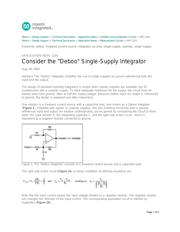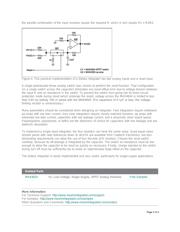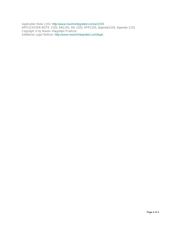herunterladen

Maxim > Design Support > Technical Documents > Application Notes > Amplifier and Comparator Circuits > APP 1155
Maxim > Design Support > Technical Documents > Application Notes > Measurement Circuits > APP 1155
Keywords: deboo, Howland current source, integrator, op amp, single-supply, opamps, single supply,
APPLICATION NOTE 1155
Consider the "Deboo" Single-Supply Integrator
Aug 29, 2002
Abstract: The "Deboo" Integrator simplifies the use of single-supplies by ground-referencing both the
input and the output.
The design of standard inverting integrators is simple when bipolar supplies are available, but it's
cumbersome with a unipolar supply. To allow adequate headroom for the output, the circuit must be
biased away from ground, often at half the supply voltage. Because neither input nor output is referenced
to ground, the design is awkward and often impractical.
One solution is a Howland current source with a capacitive load, also known as a Deboo integrator
(Figure 1). Powered with bipolar or unipolar supplies, this non-inverting circuit has both a ground-
referenced input and output. An intuitive understanding can be gained by considering the circuit in three
parts: the input resistor R, the integrating capacitor C, and the right side of the circuit - which is
equivalent to a negative resistor connected to ground.
Figure 1. The "Deboo integrator" consists of a Howland current source and a capacitive load.
The right side of the circuit (Figure 2a) is easily simplified. Its defining equations are
Note that the input current equals the input voltage divided by a negative resistor. The negative resistor
just changes the direction of the input current. The corresponding equivalent circuit is inferred by
inspection (Figure 2b).
Page 1 of 4






